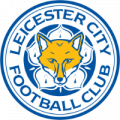In the late 1980s, a scrawny young midfielder called Josep was beginning to make his way in the game, but the odds seemed stacked against him.
Sure, he had taken the first step in achieving his dreams, enrolling in the La Masia school of football established under the recommendation of former Barcelona player and Josep’s hero, Johan Cruyff. But this wasn’t the Barcelona we know today.
Terry Venables was the man in charge, and Josep didn’t have much hope of breaking into his first team. He was too lanky, too slight, too easily bullied, not fast enough. Then, in 1988, things started to look up. Venables was sacked, and Cruyff was brought in as manager, tasked with saving the sinking ship that Barcelona had become.
“They wanted to get rid of Pep,” Cruyff later said in his posthumously released autobiography. “They thought he was a lanky great beanpole who couldn’t defend, who had no strength and couldn’t do anything in the air.
“What all those people didn’t see was that Guardiola had the fundamental qualities needed at the top level: speed of action, technique, insight. Those are phenomena that very few people exhibit, but in his case they were present in spades.”
Five years later, Pep Guardiola had become the beating heart of one of the greatest sides European football had ever seen. Cruyff’s ‘Dream Team’ won the lot, and that lanky great beanpole now had a cabinet full of domestic and European accolades.
From player to manager, you know the rest of the Pep Guardiola story. Some of it is still to be written, some heights still to be scaled. But it would likely have finished in the opening chapter if not for the nurturing presence of Johan Cruyff.
Ferguson learns from Cruyff masterclass
However, the story of Cruyff’s impact on the Premier League goes back much further than Guardiola’s arrival in 2016.
On the 2nd November 1994, over 114,000 people crammed into the towering stands of the Camp Nou to witness one of Barcelona’s most perfect European performances.
17 years before Xavi and Iniesta put Sir Alex Ferguson on their carousel and ‘left him dizzy’, it was Cruyff’s team who had embarrassed him in front of the world. Guardiola, Romário, Stoichkov, Koeman and co. battered Manchester United 4-0 that night, and left Ferguson positive that the only way he was taking his team to the top of the game was to phase out the experienced heads who had let him down.
Paul Ince, a “f****** bottler” in the eyes of Ferguson, felt the full force of the hairdryer and was gone the following year. Andrei Kanchelskis and Mark Hughes followed suit, soon followed by Steve Bruce and Paul Parker.
"That was a big lesson for me” Ferguson later said. “They showed us how important it is to possess the ball. I hadn’t understood it until then. I learned how it important it is to have control of the ball in European matches.”
The old guard were out, new blood was brought in to supplement the Class of ’92, whose development was hastened by Ferguson’s desire to overhaul his thoroughly outclassed side.
By the end of the decade, United had remade themselves as English football’s dominant force, and had won the European Cup against Bayern Munich – fittingly, they won the final in Barcelona.
It was Cruyff’s team that had given Ferguson the kick up the backside he needed to rebuild his side, to build a treble-winning team against which all future English champions would be measured.
United beaten by resplendent Barça again
Fast-forward to 2011, and any scientists or philosophers with a theory of time as a cyclical concept had a compelling argument as Barcelona, one of the greatest teams in footballing history, dealt out another lesson to Sir Alex Ferguson’s Manchester United.
The 2011 Champions League final was the crowning glory for Guardiola at Barça, once again showing United a different way of playing football.
“This may be the same kind of stepping stone that we had some years ago when they beat us 4-0,” Ferguson said.
This time, though, Ferguson didn’t have it in him to do the rebuilding himself. He retired from the game two years later, and left a successor in charge – after all, that was what Guardiola was to Cruyff.
The David Moyes years were a failure, but United could be seen to look towards Cruyff in their next appointment with Louis van Gaal taking charge. He and Cruyff were generally at odds over matters of tactics but they read from the same textbook of football philosophy.
Eventually, though, with the news that Guardiola was to set up camp across the city from them, United took the only step they thought possible. They appointed his antithesis, his nemesis, his former Barcelona colleague, José Mourinho. United never managed to replicate the Cruyffian ideal, but perhaps they could beat it.
You can decide for yourself how that’s gone for them.
Wenger, Bergkamp, Henry
Of course, following on from the Manchester United side of the late 90’s and early 2000’s were the Arsenal Invincibles.
It isn’t hard to see the impact Cruyff has had on Arsène Wenger, not only in terms of football aesthetics but also his key belief in promoting from his club’s youth system.
The Dutchman’s spirit was written through Wenger’s best Arsenal sides. Dennis Bergkamp idolised the man, and had a similar tale to tell of his impact after being coached by him during his formative years at Ajax.
“Others at the club said I wasn’t strong or aggressive enough,” Bergkamp said, “But he said: “just look at the talent.””
The name Bergkamp can hardly be uttered in North London without the accompaniment of Thierry Henry, and it was Cruyff who the Frenchman sought to emulate with the number 14 on his back. That went pretty well for him – less so his attempt to recreate Cruyff’s infamous passed penalty with Robert Pirès in 2005.
One of the clearest symbols of the past vs the present in Dutch football came in 2007, as Arsenal came up against PSV Eindhoven in the latter stages of the Champions League.
Oddly enough, it was the Londoners flying the flag for Totaalvoetbal against a rigid, prosaic, physical PSV side drilled by a fallen Cruyff disciple in Ronald Koeman.
PSV were ugly and unimaginative, but they prevailed 2-1 thanks to a powerful late header from towering defender Alex.
Koeman, of course, would later make his own way in the Premier League. Despite six impossibly successful years under the Dutchman at Barcelona, you would be hard-pressed to find anyone willing to call his Everton team Cruyffian.
Now, Koeman has the top job and the task of taking the Netherlands back to the top end of international football. He may well be successful – but it is unlikely to be pretty.
Laudrup's Swansea fall apart
Other followers of Cruyff had had mixed amounts of success in the Premier League. Rafa Benítez hailed him as an inspiration, Eric Cantona as his childhood hero, and Michael Laudrup as the key figure in his coaching journey which brought Swansea City a League Cup win, shortly before the wheels came off.
That has been one of the themes of attempted Cruyff replicants in the Premier League; they haven’t stood the test of time.
Laudrup was sacked within a year of being linked with the Barça and Real Madrid jobs. Roberto Martínez and Antonio Conte’s respective interpretations of 3-4-3 at Wigan Athletic and Chelsea shone brightly but briefly, with FA Cup-winning Wigan relegated and Chelsea going from first to fifth in the space of a year. Arsenal showed England how beautiful football could be, and then… well, you know.
If Guardiola was right in his assessment that “Cruyff built the chapel. Our job is to maintain it,” then many of his missionaries have stumbled along the way.
Guardiola carries the torch
It is the Manchester City manager who has had the most success in his personal journey of homage to Cruyff.
At Barcelona, he refurbished the chapel, added a litany of new saints to the stained-glass windows, and added a steeple higher than any seen in Spain before.
In Munich, he opened a church and overpowered the heavy metal bar down the road in Dortmund with a harmonious gospel choir.
Now, in Manchester, he is building a cathedral. Already, in terms of sheer numbers, City are the most dominant team we have seen and the blueprint is there to take the project further, higher, better.
And in every move, you can see Johan Cruyff.
Txiki Begiristain, a former Barcelona winger now working as a director at City, said of the Dutchman: “When there are doubts, people tend to seek safety in numbers, to go with the herd. Not Cruyff. His first solution was always to be more attacking, more expansive.
“Three at the back and the centre-back is Ronald Koeman? Instead of full-backs, midfielders? Every time he sought a solution, he attacked more. And when he told us what he was doing, we thought: 'Is he mad or what?'”
Consider, then, Manchester City’s second leg in the Champions League quarter-final against Liverpool this season. Remember the pre-match theories about the tactics when Guardiola announced an impossibly attacking line-up? ‘Three at the back and one of them is Kyle Walker? Three wingers, two playmakers, and two forwards?’
Of course, it didn’t work. An impressively dominant performance bore no fruit thanks in equal share to the officiating team – as Leroy Sané’s goal was incorrectly ruled out – a lack of killer instinct from City, and a near-perfect counter-attacking performance from Klopp's Liverpool.
It is also unclear as to whether Cruyff would approve of the way Guardiola has at times neglected his duty to the talented youngsters at his disposal at City, though with the likes of Koeman, Romário, Stoichkov, Hagi, and Laudrup, he was no stranger to spending the big bucks when he saw fit.
Jadon Sancho and Pablo Maffeo have sought regular football elsewhere, and more will likely follow. But look at the improvements to Raheem Sterling and Leroy Sané, the doors being opened to Phil Foden and Oleksandr Zinchenko, and you see a manager still firmly committed to nurturing his young stars – even if they end up plying their trade elsewhere.
Who next?
A few years ago, a cartoon went semi-viral on football Twitter. You may have seen it. It depicted Rinus Michels passing his wisdom onto Cruyff, who did the same with Guardiola, who in turn was shown imparting his ideology onto Xavi Hernández.
What the cartoonist could not have predicted was what the future may hold for this line of teachers and students. Who is next?
Right now, a good bet looks like being Mikel Arteta. The former Arsenal midfielder has spent two years under Guardiola at City and at time of writing is the favourite to take over from Wenger at the Emirates.
What his coaching career holds is impossible to say for now. If he does succeed, he will have a lot to thank Guardiola for – and, in turn, he will owe a great deal to Johan Cruyff.
Perhaps, years from now, we will see a superclub in Manchester City still fashioned in the image of Guardiola, just as the Camp Nou still drips with memories of Cruyff. Perhaps a successor will have overhauled him, a coach pulled from the backroom who moves some magnets on a tactics board and flips the game upside down all over again.
English football’s newest Cathedral of Cruyff is still under construction. Who can say what heights its gilded towers will reach?










































